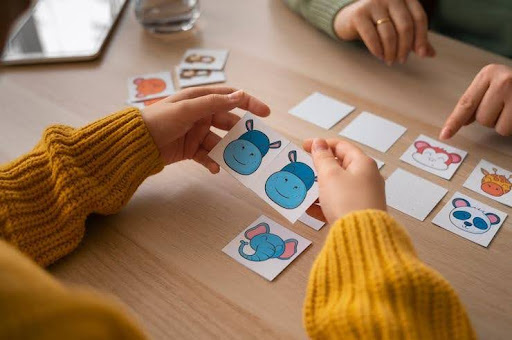Have you become a parent recently? Are you worried about your kids’ early learning practices? Don’t worry, baby flashcards help you with this. The early childhood period is critical for the overall growth and development of children. The use of flashcards is simple, yet effective for brain development.
The use of the right early childhood learning tools fosters creative imagination among children. Go through the guide to learn how these tools can make a difference in developing their brain and actions.
What Are Picture Flashcards
The cards that come with visual images for babies are called flash cards. The baby’s flashcards help design and stimulate the brain and visual actions of a baby. These cards feature large and high-contrast black and white images. The babies find it easier to focus on.
The use of these cards is common in both school and home settings. These cards help them learn and recognize different fruits, numbers, animals, alphabets, verbs, and emotions.
Types of Picture Flashcards and Their Uses
Several types of picture flashcards focus on teaching kids different aspects of life and the world. The table classifies the various types of picture flashcards.
| Types | Example Topics | Learning Focus |
| Object Flashcards | Animals, fruits, and vehicles | These increase their vocabulary and power of recognition |
| Action Flashcards | Walking, running, sleeping | These help them learn verbs and the formation of sentences |
| Emotion Flashcards | Angry, sad, and happy | Improves the kids’ emotional intelligence. |
| Alphabet or Number cards | A-Z and 1-10 | These cards boost their familiarity with numbers and alphabet |
Cognitive Benefits of Picture Flashcards
The cognitive ways a baby’s flashcard develops the brain and memory of a child include the following-
Improves Memory and Recall
The use of the baby’s flashcards is ideal to improve the memory of a child. This makes the visual memory of a child strong in their early phase of life. The spaced repetition helps reinforce the learning habits among the babies.
The spaced repetition helps make a strategic review of the information at increased intervals and reinforces learning aspects in children. You can easily strengthen their memory with it.
Boosts Language Acquisition
The use of flashcards is more effective than educational toys to improve their visual capacities. This is because the paired words with visuals foster the growth of vocabulary in children. Also, the flashcards can easily improve their capacity to learn more than one language. This increases their grasp of the vocabulary of a language.
Encourages Associative Thinking
The children tend to connect the visuals with the real-world ideas and concepts. The baby’s flashcards improve associative thinking as they connect the real-world concepts with the images more. This builds their skill to classify and compare the differences among the different objects, emotions, and more.
Engagement Levels in Common Learning Tools (Ages 2–6).
The table below shows how much capacity a picture flashcard holds over the other media, such as worksheets and videos.
| Tools | Picture Flashcards | Worksheets | Videos |
| Visual appeal | High | Medium | High |
| Interactivity | High | Low | Passive |
| Retention score | 85%-90% | 60%-70% | 70%-80% |
Step-by-Step Guide: Using Flashcards Effectively at Home
The step-by-step process of using the baby’s flashcards includes the following stages.
Start with one topic– Choose a topic of flashcards before introducing them to it. Try to introduce the cards of the same topic daily to your kid. Do not overload your kids’ memory by jumping into several topics at once.
Introduce 3–5 cards daily– The use of educational toys is not sufficient to develop memory growth substantially. Try to introduce around three to five flashcards daily to your child.
Use repetition with variety– Try to shuffle or change the order of the cards more often to help them learn the alphabet or objects more precisely.
Name, describe, and ask questions– Always try to question your kid about the names, descriptions, and more while introducing them to the flashcards.
Track progress and rotate topics– Try to keep track of the progress of your kid by shuffling the topics to practice often.
Digital vs. Physical Flashcards
The use of traditional or physical flashcards over digital flashcards can come with some major cons. Here is a table showing the differences between the two-
| Factors of Differences | Digital Flashcards | Physical Flashcards |
| Features | It comes in a digital format | It comes in a physical format |
| Tactile Interactions | It does not facilitate a tactile interaction. | This facilitates a tactile interaction. |
| Portability | These are highly portable | These have a moderate level of portability |
| Screen Exposure | These have a higher exposure to the screen | Not applicable |
| Customization | These have a high level of customization. | These are difficult to customize. |
Consider the above differences before buying baby flashcards for your kids.
Final Thoughts
The early stage of a child’s life is the time of their cognitive development. Using different media can increase their memory capacity and boost their learning power. Parents prefer using the baby flashcards to improve their language acquisition and associative thinking.
However, remember to keep a track of their progress by asking questions and shuffling the topics. Use the flashcards to help your kids enjoy their learning time. Get the tips to create DIY flashcards or download free flashcard sets for your baby today.
